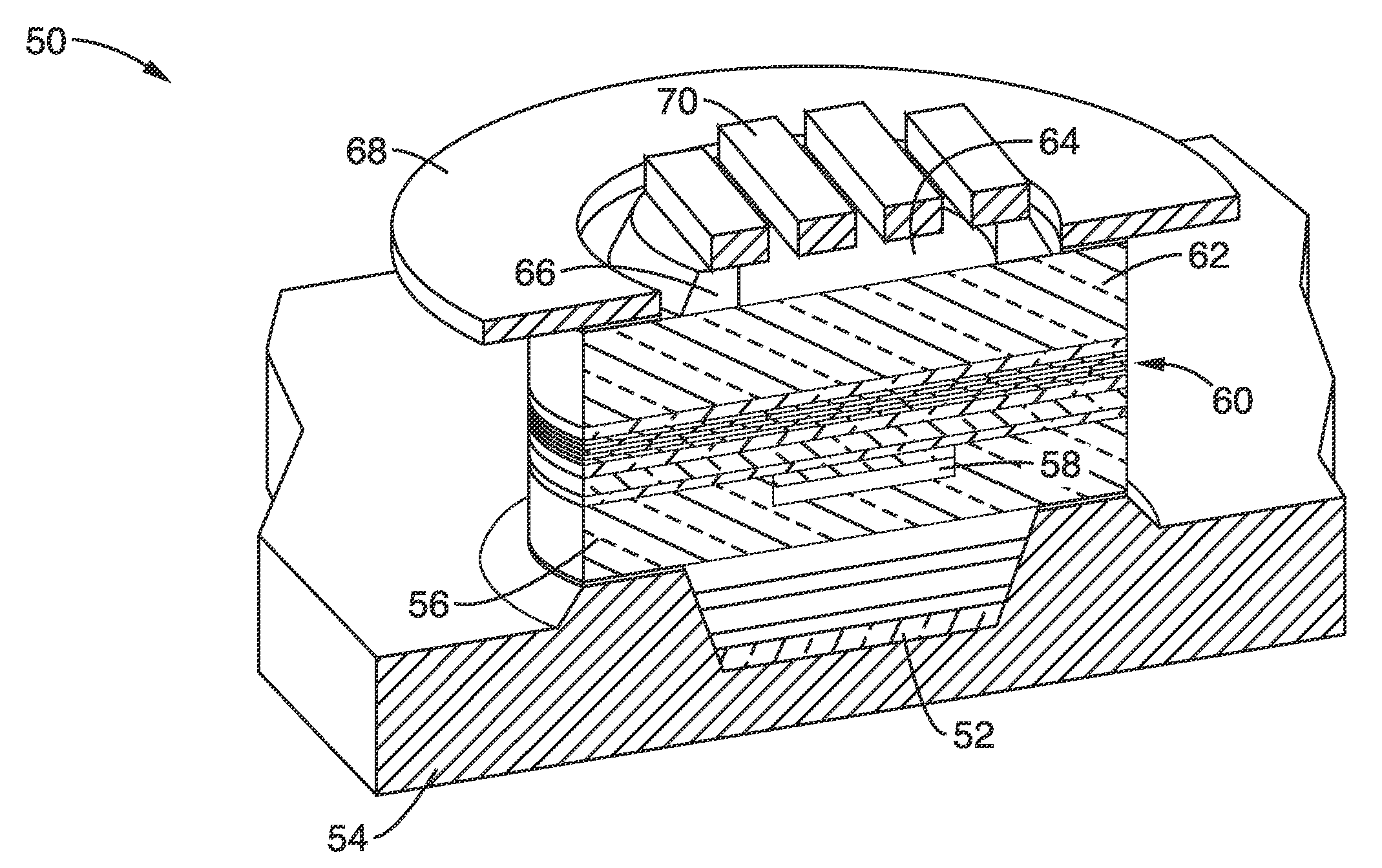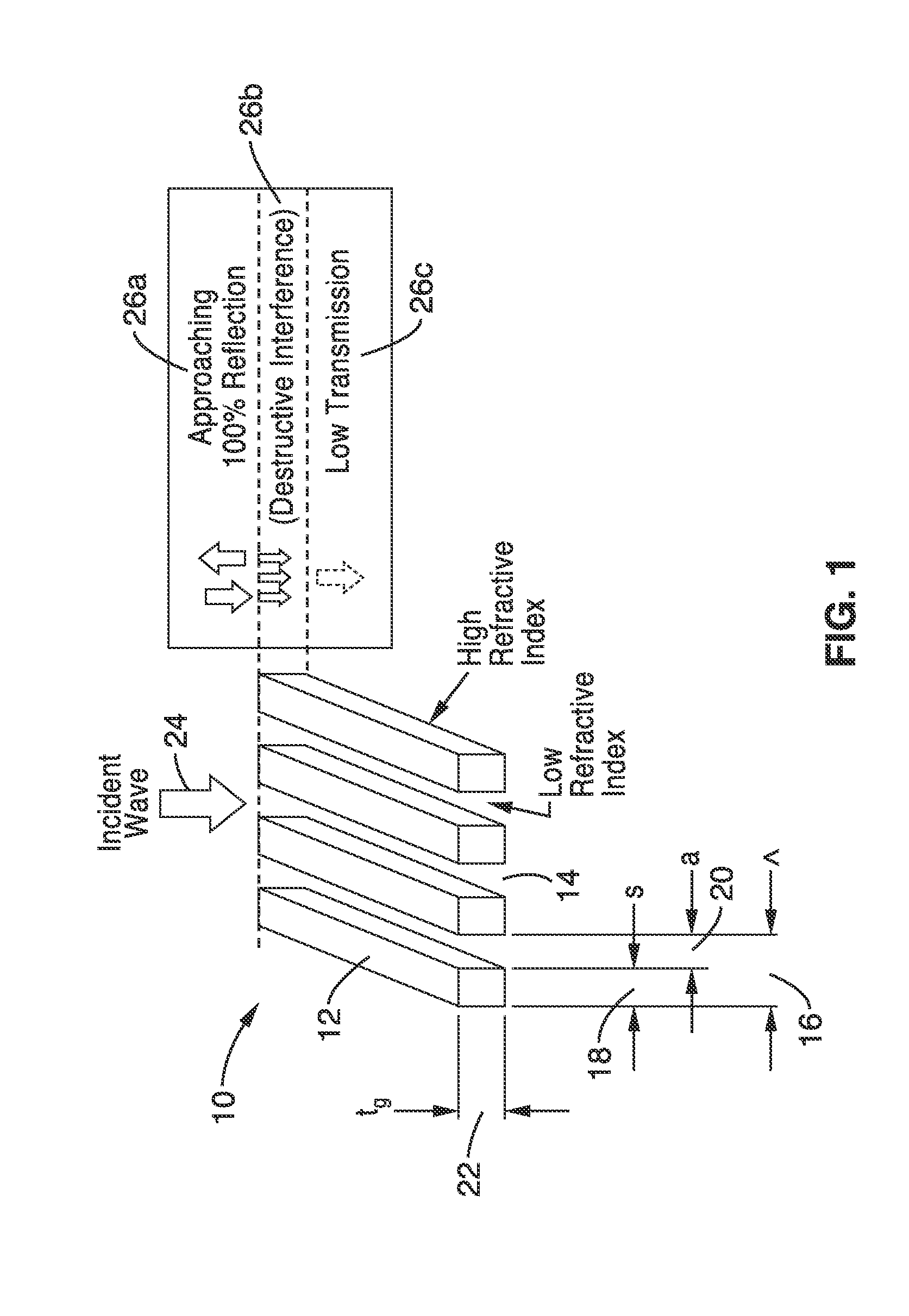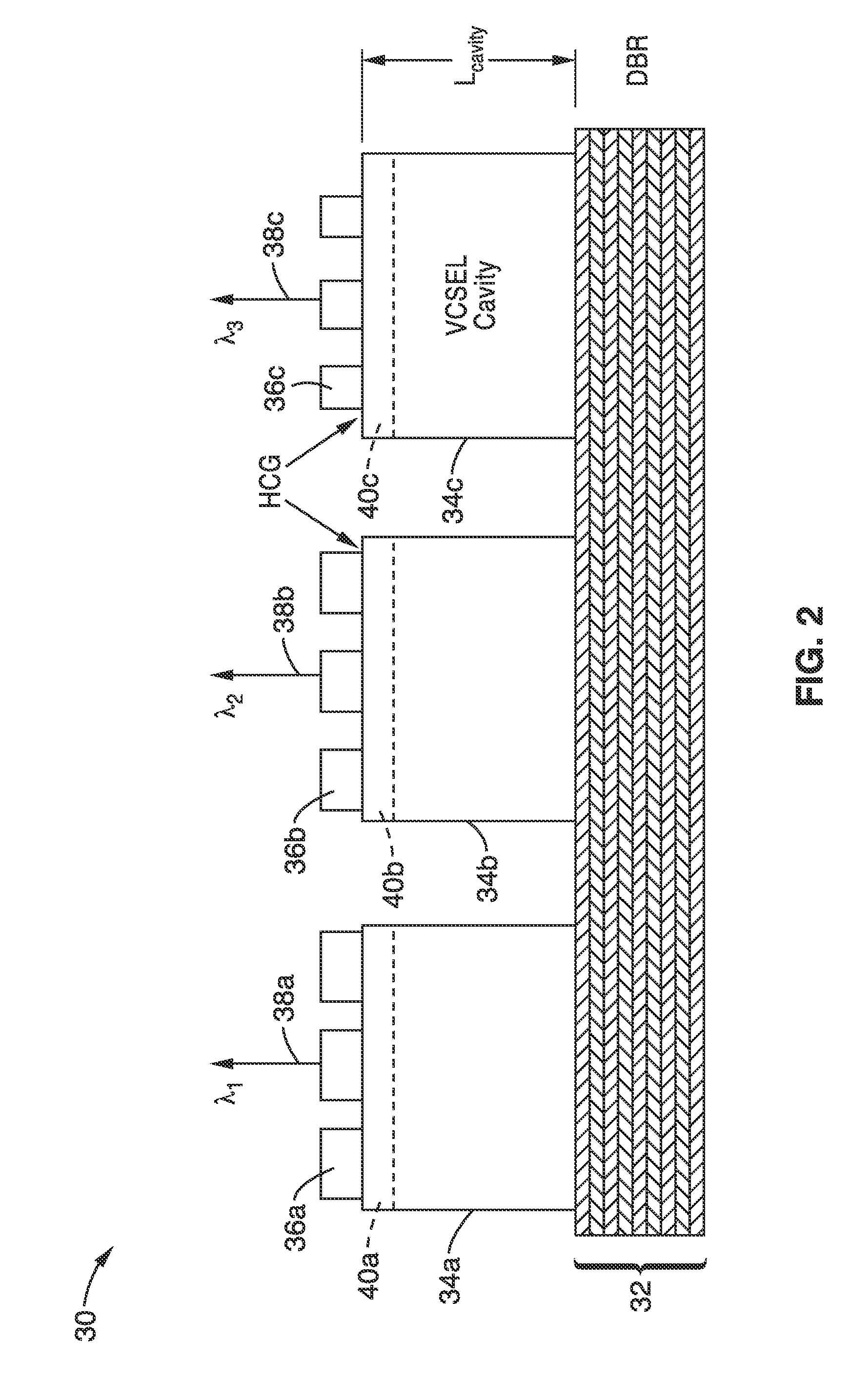Monolithically integrated multi-wavelength high-contrast grating vcsel array
a monolithic integrated, high-contrast grating technology, applied in the direction of semiconductor lasers, laser details, electrical apparatus, etc., can solve the problems of difficult to achieve the precise control of the lasing wavelength using the above methods, large number of fabrication steps, and inability to scale for large vcsel arrays. achieve the effect of high reflectivity
- Summary
- Abstract
- Description
- Claims
- Application Information
AI Technical Summary
Benefits of technology
Problems solved by technology
Method used
Image
Examples
embodiment 1
[0078]2. The apparatus , wherein said first mirror structure is fabricated over a substrate.
[0079]3. The apparatus according to embodiment 1, wherein said first mirror structure comprises a distributed Bragg reflector (DBR).
[0080]4. The apparatus according to embodiment 1, wherein said substrate comprises Indium Phosphide (InP), GaAs, GaN, sapphire or Si.
[0081]5. The apparatus according to embodiment 1, wherein said high-contrast grating (HCG) is configured for reflecting a first portion of the light back into each said vertical cavity at a controlled polarization, while a second portion of the light is output from said apparatus.
[0082]6. The apparatus according to embodiment 1, wherein each vertical cavity is configured with a tunnel junction for removing the majority of p-doped materials.
[0083]7. The apparatus according to embodiment 1, wherein said first mirror structure comprises a first mirror layer over which are disposed a plurality of vertical cavities.
[0084]8. The apparatus...
embodiment 11
[0088]12. The apparatus , wherein said electrical confinement layer comprises areas of ion implantation.
[0089]13. The apparatus according to embodiment 11, wherein said electrical confinement layer comprises a buried tunnel junction.
[0090]14. The apparatus according to embodiment 11, wherein said electrical confinement layer comprises an oxide aperture.
[0091]15. The apparatus according to embodiment 11 further comprising a vertical resonator cavity disposed over said electrical confinement layer.
[0092]16. The apparatus according to embodiment 1, further comprising an air gap disposed between said high-contrast grating (HCG) and each vertical cavity.
[0093]17. The apparatus according to embodiment 1, further comprising a low index material layer, with refractive index less than two, disposed between said high-contrast grating (HCG) and each vertical cavity.
[0094]18. The apparatus according to embodiment 1, wherein said high contrast grating comprises a material having a refractive ind...
embodiment 26
[0103]27. The method , wherein said first mirror comprises a Distributed Bragg Reflector (DBR) mirror, or another High Contrast Grating (HCG) mirror.
[0104]28. The method according to embodiment 26, further comprising the step of etching away a sacrificial layer from beneath said HCG of each of said second mirrors to form a sub-grating space of low index material.
[0105]29. The method according to embodiment 26, further comprising the step of fabricating an electrical confinement layer adjacent said active region.
PUM
 Login to View More
Login to View More Abstract
Description
Claims
Application Information
 Login to View More
Login to View More - R&D
- Intellectual Property
- Life Sciences
- Materials
- Tech Scout
- Unparalleled Data Quality
- Higher Quality Content
- 60% Fewer Hallucinations
Browse by: Latest US Patents, China's latest patents, Technical Efficacy Thesaurus, Application Domain, Technology Topic, Popular Technical Reports.
© 2025 PatSnap. All rights reserved.Legal|Privacy policy|Modern Slavery Act Transparency Statement|Sitemap|About US| Contact US: help@patsnap.com



